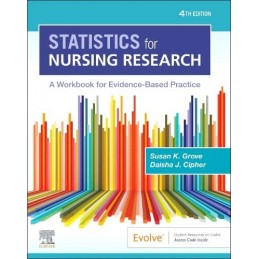- Reduced price

Order to parcel locker

easy pay


 Delivery policy
Delivery policy
Choose Paczkomat Inpost, Orlen Paczka, DHL, DPD or Poczta Polska. Click for more details
 Security policy
Security policy
Pay with a quick bank transfer, payment card or cash on delivery. Click for more details
 Return policy
Return policy
If you are a consumer, you can return the goods within 14 days. Click for more details
Get the review and practice you need to critically appraise the statistical methods used in published research! Statistics for Nursing Research, 4th Edition helps you understand and interpret statistical methods, sampling and measurement techniques, and statistical analysis techniques. This unique and practical workbook is divided into two parts to differentiate between basic and advanced statistical methods, with dozens of hands-on exercises that will help you practice working with the statistical methods needed for building an evidence-based practice. This workbook is an indispensable resource for any nursing student or practicing nurse wishing to gain competency in conducting statistical analyses.
Data sheet
